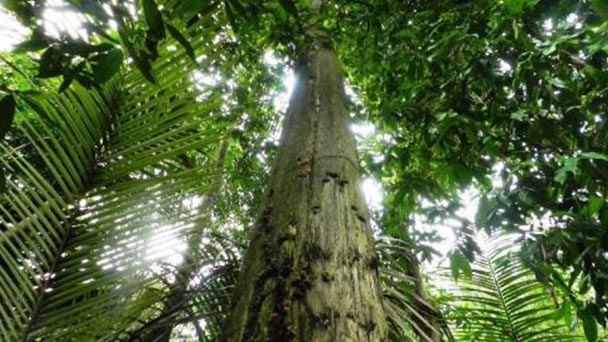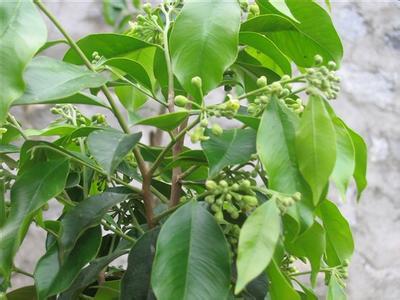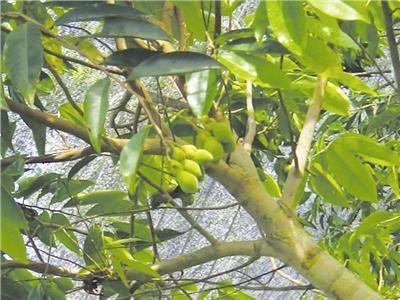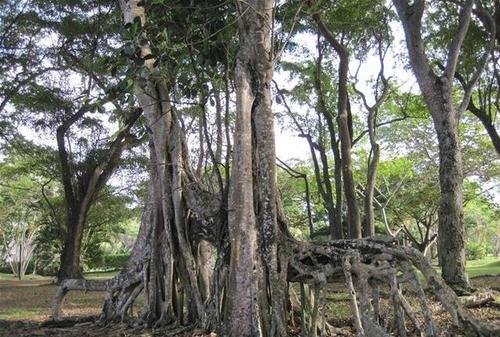Aquilaria malaccensis profile
Written by Maggie
Dec 25 2020

Aquilaria malaccensis is a species of agarwood of the genus Aquilaria in the Family Daphne, mainly distributed in Guangdong, Guangxi, Hainan, Taiwan and Yunnan provinces, generally born below 400 m above sea level, up to 1000 m in Hainan.
Aquilaria malaccensis wood is with aroma, old dry or injured tree roots secreted resin, over time to form a brown or light yellow solid, precious Chinese medicine - "aloes". Aloes is China's traditional precious Chinese medicinal materials and natural flavor.
Aquilaria malaccensis picture

Morphological characteristics of Aquilaria malaccensis
Aquilaria malaccensis is a tree, 5-15 m tall, with dark gray bark, almost smooth, and tough fibers; Branchlets are cylindrical, crepe, sparsely pilose when young, glabrous or sub glabrous. Leaves are leathery, circle, elliptic to oblong, sometimes nearly obovate, 5-9 cm long, 2.8 6 cm wide, apex sharp or acute and short point, base broadly cuneate, dark green or purplish green, light, the light green, both surfaces glabrous, lateral veins 15-20 per side, in the more obvious, the small arteries and veins slender, nearly parallel, not obvious, margin is sometimes sparsely pilose; The petiole ca. is 5-7 mm, hairy. Flowers are fragrant, yellow-green, multitudinous, forming umbel; Pedicels are 5-6 mm, densely yellow-gray pubescent; The calyx tube is shallow campanulate, 5-6 mm long, densely pubescent on both sides, 5-lobed, lobes ovate, 4-5 mm long, apex rounded obtuse or acute, pubescent on both sides; aquilaria malaccensis has 10 petals, scaly, inserted into throat of calyx tube, densely hairy; Aquilaria malaccensis has 10 tamens, arranged in 1 round, filaments ca. 1 mm, anthers oblong ca. 4 mm; The ovary is ovate, densely grayish - white hairy, 2-loculed, ovules 1-ovule per compartment, style very short or absent, stigma capitate. The capsule stem is short, ovoid, young green, 2-3 cm long, about 2 cm in diam., apex with short point, base gradually narrow, densely yellow pubescent, 2 disc, 2 rooms, each room has a 1 seed, seeds brown, ovoid, ca. 1 cm long, 5.5 mm wide, thin soft hairy, base with a subsidiary body, subsidiary body length of about 1.5 cm, upper wide flat, ca. 4 mm wide, lower shank shape. Flowering period is in spring and summer, fruiting in summer and autumn.
Aquilaria malaccensis growing environment
Aquilaria malaccensis prefers low altitude mountains, hills and sparse forests at the side of the road.

Species value of Aquilaria malaccensis
The economic value
The resin accumulated after the injury of old stem of Aquilaria malaccensis, commonly known as Aquilaria malaccensis, can be used as the raw material of perfume and as a specific medicine for the treatment of stomach diseases. As a medicinal material, Aquilaria malaccensis has a very high economic value, which is famous at home and abroad and very precious. At present, Chinese medicine Aquilaria malaccensis mostly depends on import, which is very expensive. However, with the implementation of relevant resource protection policies abroad, the import of Aquilaria malaccensis is in short supply, and the price continues to rise, from about 70,000 yuan /kg in 2005 to more than 780,000 yuan /kg in 2011. Now the price of Aquilaria malaccensis is already higher than that of gold, reaching the level of selling Aquilaria malaccensis on the basis of price. With the deepening of people's understanding of the pharmacological effects of Aquilaria malaccensis, the demand for daily necessities, incense, perfumes, medicines and beauty products is increasing. Therefore, the price of Aquilaria malaccensis is increasing, leading to the continuous expansion of the planting area of Aquilaria malaccensis.
Aquilaria malaccensis bark fiber is flexible, white and delicate, which can be used as high grade paper material and artificial cotton. The xylem can extract aromatic oil, and flowers can make extract.
Ecological value
Aquilaria malaccensis has a good ecological function, which can effectively maintain soil fertility and water conservation, thus ensuring biodiversity. Moreover, Aquilaria malaccensis, one of the high-grade green trees, is evergreen all the year round and has the advantages of purifying the air and beautifying the environment. Therefore, in terms of its good ecological and social functions, the planting area of Aquilaria malaccensis has been constantly expanding.

Latest Updated
- Benefits of Bugleweed - 7 Science-backed Health Benefits
- Bugleweed Dangers & Side Effects - Is It Poisonous?
- How to Plant Evergreen Trees - What You Should Know
- When to Plant Evergreens - Grow Guide for Evergreen Trees
- 12 Wonderful Evergreen Shrubs for Your Garden
- 12 Popular Evergreen Plants with Pictures for Beginners
- When And How To Prune A Lilac Bush Like a Pro
- How to Grow & Care for Lilac Vine (Hardenbergia Violacea)
- Japanese Lilac Tree (Syringa Reticulata) Care & Propagation Guide
- Shumard Oak Pros and Cons - What to Know
Popular Articles
- Winter maintenance of Antirrhinum Majus
- How to Grow Terminalia Mantaly Tree
- How to Grow and Care for Crossostephium Chinense
- How to grow Antirrhinum Majus in spring
- Peristeria Elata (Dove Orchid) Profile: Info & Care Guide
- Underwatered Snake Plant (Sansevieria Trifasciata) - Signs And How To Fix
- How to Care for Brazilian Jasmine Plant (Mandevilla Sanderi)
- How to Grow & Care for Graptopetalum Purple Delight in Summer
- Rosa Chinensis (China Rose): Plant Growing & Care Tips
- How to Care for Baby Sun Rose (Aptenia Cordifolia)